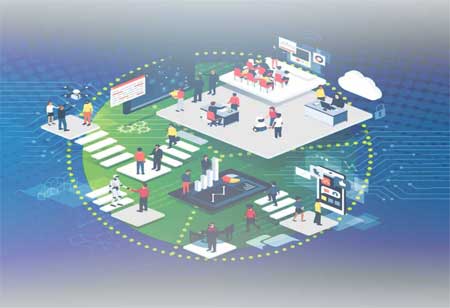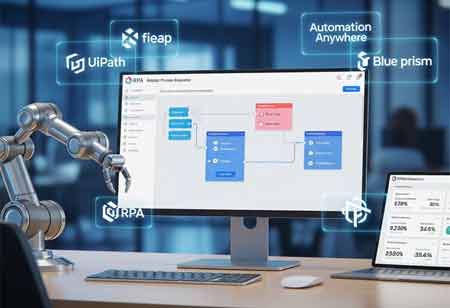THANK YOU FOR SUBSCRIBING
Leveraging Emerging Technologies for Biosurveillance
Public health, agriculture, the environment, and the food supply are at significant risk from infectious agents that arise naturally, through accidents, or via intentional introduction.

By
Apac CIOOutlook | Monday, May 27, 2024
Stay ahead of the industry with exclusive feature stories on the top companies, expert insights and the latest news delivered straight to your inbox. Subscribe today.
Advanced sensor technologies and AI in BISR enhance the detection and management of biological threats, aiding early response and mitigation and supporting health, safety, and ecosystem well-being.
FREMONT, CA: Public health, agriculture, the environment, and the food supply are at significant risk from infectious agents that arise naturally, through accidents, or via intentional introduction. Despite notable technological advances that potentially transform biosurveillance, the ability to swiftly and effectively detect these biological pathogens still needs to be improved.
The core of biosurveillance is rooted in the concept of health, as defined by the World Health Organization (WHO). This concept is an integrated, unifying approach to sustainably balance and optimize the health of people, animals, and ecosystems. It acknowledges the interconnectedness of health outcomes across humans, animals, and ecosystems, highlighting what impacts everyone.
Development of a BISR System
A Biosurveillance Intelligence, Surveillance, and Reconnaissance (BISR) system is developed to bridge the current detection gaps. This system would meet two critical needs for biosurveillance: rapid detection and predictive analysis.
BISR leverages existing repurposed and newly developed remote sensing systems, including multispectral and hyperspectral sensors. Proven technologies like genomic analysis and hyperspectral sensors are already used in food processing and are adapted for this purpose. Sensors are deployed in various locations, including confinement housing, food processing plants, aquatic systems, and at higher altitudes using balloons, aircraft, drones, and satellites.
Utilizing Proven Technologies
Technologies such as CubeSats, a class of nanosatellites, are particularly well-suited for BISR due to their low cost, ease of deployment, and short latency times. These sensors could play a crucial role during emergencies by providing rapid detection capabilities.
Research and Development Priorities
The next step involves prioritizing research and development to swiftly validate imagery and hyperspectral data findings regarding different volatile organic compounds (VOCs) and associating those changes with specific pathogens. This process requires the creation of standard reference cultures, combining genomic and hyperspectral microscopic analyses to establish definitive pathogen signatures.
These validated cultures would test sensor detection sensitivity across various environments and conditions, optimizing sensor placement to ensure accurate detection. Linking hyperspectral changes with specific diseases would enhance the effectiveness of biosurveillance.
Broader Applications of BISR
Beyond identifying pathogens in specific environments, BISR could detect larger-scale events by identifying exhaled gases and VOCs associated with metabolic changes during disease progression. For instance, during the recent avian influenza outbreak in livestock, BISR detected the disease's related VOCs rather than the viral particles.
This approach suggests the potential to identify diseases before clinical symptoms appear, facilitating proactive responses. Additionally, BISR monitors VOCs at mass gatherings, such as airports and stadiums, to alert public health officials about potential outbreaks and pandemics, supporting predictive analysis and anticipatory forecasting.
Role of AI and Machine Learning
The extensive data generated by the BISR system, with each pixel containing geospatial coordinates, is too vast for human analysts to manage alone. Therefore, an AI-based model trained by subject matter experts would be essential to handle this volume of data.
The combination of advanced sensors and AI platforms offers new capabilities for early-stage outbreak detection. AI systems, alongside experts working with algorithm developers and AI engineers, form the analytical backbone of BISR, enabling timely and accurate pathogen detection.
Integrating advanced sensor technologies and AI within the BISR framework transforms the detection and management of biological threats by providing tools for early detection, response, and mitigation. BISR would significantly enhance the ability to handle outbreaks efficiently. This system ultimately supports the health and safety of people, animals, and ecosystems, aligning with the health approach and addressing the interconnected challenges of infectious agents.





